Types of Zongshen 140cc Engines
Zongshen 140cc engines are available in various configurations, each designed to meet specific performance requirements and operational conditions. Understanding the differences between these engine types will help you select the optimal model for your application.
Single-Cylinder 4-Stroke Engine
This standard configuration uses the 4 essential strokes (intake, compression, power, and exhaust) to generate power. With a single cylinder providing one power stroke per crankshaft rotation, these engines offer:
- Reliable and consistent power delivery
- Simple construction with fewer moving parts
- Excellent durability and easy maintenance
- Cost-effective operation for everyday applications
Best for: General purpose applications requiring moderate power
Dual-Cylinder 4-Stroke Engine
Featuring two cylinders working in tandem, these engines deliver two power strokes per crankshaft rotation, resulting in:
- Increased power output for demanding applications
- Smoother operation with reduced vibration
- Enhanced torque for better acceleration
- More efficient power delivery across the RPM range
Best for: Performance applications requiring additional power
Air-Cooled Engine
Using ambient airflow to dissipate heat, these engines feature cooling fins on the cylinder and head. Benefits include:
- Lightweight design without liquid cooling components
- Lower maintenance requirements
- Cost-effective construction
- Excellent reliability in moderate temperature environments
Best for: Applications in moderate climates with intermittent use
Water-Cooled Engine
Utilizing a circulating water/coolant system to manage engine temperature, these engines offer:
- Superior heat management for sustained performance
- More consistent operating temperatures
- Quieter operation with liquid-based sound dampening
- Extended engine life under high-load conditions
Best for: Heavy-duty applications and high-temperature environments
Gasoline Engine
Standard configuration using gasoline as fuel, these engines provide:
- High power-to-weight ratio
- Excellent performance characteristics
- Wide availability of fuel
- Responsive acceleration and power delivery
Best for: Motorcycles, ATVs, and recreational vehicles
Electric-Start Engine
Equipped with an electric starter motor instead of a kick-start system, these engines offer:
- Effortless starting with the push of a button
- Reduced physical effort for operation
- Improved convenience for all users
- More reliable starting in cold weather conditions
Best for: Daily riders and users preferring convenience
| Engine Type | Power Output | Weight | Cooling Efficiency | Maintenance Level | Best Application |
|---|---|---|---|---|---|
| Single-Cylinder 4-Stroke | Moderate | Light | Standard | Low | Everyday use |
| Dual-Cylinder 4-Stroke | High | Medium | Good | Medium | Performance riding |
| Air-Cooled | Moderate | Light | Adequate | Low | Light to moderate use |
| Water-Cooled | High | Heavy | Excellent | High | Heavy-duty applications |
| Electric-Start | Varies | Medium | Varies | Medium | Convenience-focused users |
Expert Tip: When selecting between air-cooled and water-cooled Zongshen engines, consider your typical riding conditions. Water-cooled engines perform better in hot climates and during extended high-speed operation, while air-cooled engines are ideal for cooler environments and occasional use.
Specifications & Maintenance of Zongshen 140cc Engine
Proper maintenance is essential for maximizing the performance, efficiency, and lifespan of your Zongshen 140cc engine. Understanding the technical specifications and following recommended maintenance procedures will ensure optimal operation.
Technical Specifications
Oil Changes
Regular oil changes are critical for maintaining engine health and performance:
- Frequency: Every 1,000km or 3 months (whichever comes first)
- Recommended Oil: 10W-30 or 20W-50 motor oil (API SF or higher grade)
- Oil Capacity: 0.9-1.1 liters (check manual for specific model)
- Procedure: Warm engine, drain old oil, replace filter, add fresh oil to correct level
Important: More frequent oil changes are recommended for high-stress riding conditions or extreme temperatures.
Air Filter Maintenance
A clean air filter ensures optimal fuel efficiency and engine performance:
- Inspection: Every 500km or monthly
- Cleaning: Every 1,000km for foam filters (using specialized cleaner)
- Replacement: Every 3,000km or whenever damaged
- Signs of Issues: Poor acceleration, reduced fuel economy, rough idling
Tip: Inspect more frequently when riding in dusty conditions.
Spark Plug Inspection
Properly functioning spark plugs are essential for reliable ignition and combustion:
- Inspection: Every 2,000km
- Replacement: Every 5,000-6,000km
- Recommended Type: NGK C7HSA or equivalent
- Gap Setting: 0.6-0.7mm
What to Check: Electrode condition, insulator color, and gap width.
Cooling System Checks
Maintaining optimal engine temperature is crucial for performance and longevity:
- For Air-Cooled Engines: Inspect cooling fins for debris/blockage monthly
- For Water-Cooled Engines: Check coolant level weekly
- Coolant Replacement: Every 2 years or 20,000km
- System Inspection: Check hoses, clamps, and radiator for leaks quarterly
Warning: Never open the cooling system when the engine is hot.
Important Maintenance Notice: Always refer to your specific Zongshen 140cc engine model's maintenance manual for detailed intervals and procedures. The recommendations provided here are general guidelines that may need adjustment based on your specific engine variant and usage conditions.
How to Choose a Zongshen 140cc Engine
Selecting the right Zongshen 140cc engine requires careful consideration of several factors to ensure it meets your specific needs and provides reliable performance for years to come.
| Selection Factor | What to Consider | Recommendation |
|---|---|---|
| Intended Use | Daily commuting, off-road, recreational | Commuting: Electric-start, air-cooled Off-road: Water-cooled dual-cylinder |
| Terrain & Environment | Urban, rural, mountains, climate | Hot climate: Water-cooled engine Moderate climate: Air-cooled engine |
| Performance Requirements | Power, torque, speed needs | High performance: Dual-cylinder Economy: Single-cylinder |
| Budget Considerations | Initial cost and maintenance | Lower budget: Air-cooled, single-cylinder Higher budget: Water-cooled, electric-start |
| Maintenance Capability | DIY skills and tools available | Limited skills: Simpler air-cooled models Advanced skills: Any configuration |
Key Selection Criteria for Zongshen 140cc Engines
When evaluating different Zongshen 140cc engine models, consider these important factors to make an informed decision:
- Intended Application: Carefully assess how you'll primarily use the engine. For daily commuting in urban areas, an electric-start model offers convenience, while off-road applications might benefit from the enhanced cooling of a water-cooled system.
- Power Requirements: Consider the power needed for your specific application. Dual-cylinder models provide more power but at higher fuel consumption, while single-cylinder engines offer better fuel economy for everyday use.
- Fuel Efficiency: With rising fuel costs, efficiency is increasingly important. Standard Zongshen 140cc engines typically consume 2.5-3 liters per 100km, but this varies by model and riding conditions.
- Maintenance Needs: Some engine variants require more frequent or specialized maintenance. Air-cooled engines typically have lower maintenance requirements compared to water-cooled models with their additional cooling systems.
- Compatibility: Ensure the engine's mounting points, electrical connections, and other specifications are compatible with your vehicle or equipment.
Expert Advice: When possible, test ride or observe vehicles equipped with the Zongshen 140cc engine model you're considering. This hands-on experience provides valuable insights into performance, noise levels, and vibration characteristics that specifications alone cannot convey.
How to DIY and Replace Zongshen 140cc Engine
Replacing a Zongshen 140cc engine requires careful planning, the right tools, and attention to detail. This step-by-step guide will help you through the process safely and effectively.
Safety First: Engine replacement involves handling heavy components and potentially hazardous fluids. Always wear appropriate safety gear (gloves, eye protection), work in a well-ventilated area, and disconnect the battery before beginning work.
Tools and Materials Required
- Socket set and wrenches (metric)
- Screwdrivers (flathead and Phillips)
- Pliers and wire cutters
- Drain pan for fluids
- Engine oil and coolant (if applicable)
- Shop towels and cleaning solvent
- Engine hoist or lifting equipment
- Torque wrench
- Service manual for your specific model
Engine Replacement Process
-
Prepare Your Workspace and Vehicle
Ensure you have a clean, level work area with adequate lighting. Position the vehicle securely on a stand to access the engine easily. Take photos of the existing setup to reference during reassembly.
-
Remove Engine Covers and Fairings
Carefully remove all plastic covers, fairings, and panels that provide access to the engine. Keep fasteners organized by location to simplify reassembly.
-
Disconnect Electrical Components
Identify and disconnect all electrical connections to the engine, including the ignition system, starter motor, sensors, and any other electrical components. Label each connection or take detailed photos.
-
Drain All Fluids
Place a drain pan underneath the engine. Remove the drain plugs to empty oil and coolant (if water-cooled). Dispose of used fluids according to local regulations.
-
Remove the Exhaust System
Unbolt the exhaust manifold from the cylinder head and detach any mounting brackets. Carefully remove the entire exhaust system.
-
Disconnect the Fuel System
Turn off the fuel valve, disconnect the fuel line from the carburetor, and cap the open line to prevent leakage. Remove any fuel system components attached to the engine.
-
Remove Drive Components
Depending on your vehicle, remove the chain, belt, or drive shaft connections between the engine and transmission/rear wheel.
-
Disconnect Cooling System Components
For water-cooled engines, remove all cooling hoses and connections from the engine. For air-cooled engines, ensure all cooling ducts are disconnected.
-
Remove Engine Mounting Bolts
Identify and remove all engine mounting bolts. Support the engine with appropriate lifting equipment before removing the final mounting bolts.
-
Extract the Engine
Carefully lift the engine from the frame, being mindful of any remaining connections or tight clearances. Move the old engine to a workbench.
-
Transfer Accessories to New Engine
Remove components from the old engine that need to be transferred to the new one, such as the carburetor, intake manifold, starter motor, and any other accessories not included with the new engine.
-
Install the New Engine
Carefully position the new engine in the frame, aligning it with the mounting points. Insert and hand-tighten all mounting bolts before final tightening with a torque wrench to manufacturer specifications.
-
Reconnect All Systems
Reconnect the exhaust, fuel system, cooling system, and electrical components. Ensure all connections are secure and properly routed.
-
Refill Fluids
Add the recommended oil and coolant (if applicable) to the appropriate levels. Double-check that all drain plugs are securely tightened.
-
Reinstall Covers and Fairings
Reattach all body panels, covers, and fairings removed earlier. Ensure all fasteners are properly secured.
-
Initial Start and Testing
Before starting, check all connections one final time. Start the engine and let it idle, checking for any leaks, unusual noises, or vibrations. Verify proper operation of all systems.
-
Break-In Period
Follow the manufacturer's recommended break-in procedure for your new engine. Typically, this involves avoiding high RPMs and heavy loads for the first 500km, and performing an early oil change after the initial break-in period.
DIY Success Tip: Take your time with this process - rushing can lead to mistakes. If you encounter a step that seems difficult or beyond your technical comfort level, don't hesitate to consult a professional mechanic. Document the entire process with photos or video for future reference.
Frequently Asked Questions
Yes, the Zongshen 140cc engine can be effectively modified to enhance performance. Common upgrades include:
- High-flow air filters to improve airflow and engine breathing
- Performance exhaust systems that reduce back pressure
- Modified camshafts for improved valve timing and lift
- Higher compression pistons for increased power output
- Carburetor jetting adjustments to optimize fuel delivery
- Port and polish cylinder head work for improved gas flow
These modifications can significantly increase power output, but may affect reliability and fuel economy. It's advisable to work with experienced mechanics when pursuing performance modifications.
The Zongshen 140cc engine demonstrates impressive fuel efficiency, typically consuming between 2.5 to 3 liters of fuel per 100 kilometers under normal operating conditions. However, actual fuel consumption varies based on several factors:
- Riding style: Aggressive acceleration and high-speed operation increase consumption
- Load: Heavier loads require more fuel to maintain performance
- Terrain: Hilly or rough terrain demands more power and thus more fuel
- Maintenance: Well-maintained engines with clean air filters and properly adjusted carburetors achieve better fuel economy
- Engine variant: Differences exist between single and dual-cylinder models
Regular maintenance and moderate riding speeds will help maximize the engine's fuel efficiency potential.
The manufacturer recommends using either 10W-30 or 20W-50 motor oil for Zongshen 140cc engines. These oils provide excellent protection across a range of operating temperatures and conditions. When selecting engine oil:
- Choose oil meeting API SF or higher quality standards
- Use 10W-30 for moderate climates (50°F to 100°F / 10°C to 38°C)
- Use 20W-50 for hot climates (above 100°F / 38°C)
- Select fully synthetic oils for improved protection and extended oil change intervals
- Avoid using automotive oils with friction modifiers labeled "Energy Conserving" as they may cause clutch slippage
Always check your specific model's manual for any variations in oil requirements, as some specialized variants may have different recommendations.
The Zongshen 140cc engine is remarkably versatile and finds application in numerous vehicles and equipment:
- Motorcycles: Particularly popular in small to mid-sized street bikes and trail motorcycles
- Scooters: Provides ample power for larger scooters requiring more performance than 50cc or 125cc engines
- Off-road Vehicles: Powers dirt bikes, mini buggies, and all-terrain vehicles (ATVs)
- Agricultural Equipment: Used in small tillers, water pumps, and portable generators
- Go-karts and Mini-bikes: Offers good power-to-weight ratio for recreational vehicles
The engine's popularity stems from its excellent balance of power, reliability, and fuel efficiency, making it suitable for both recreational and utilitarian applications across various markets worldwide.
With proper maintenance, a Zongshen 140cc engine can reliably operate for 30,000 to 50,000 kilometers (18,000 to 31,000 miles) before requiring major overhaul. Many well-maintained engines exceed this range significantly. Factors affecting longevity include:
- Adherence to recommended maintenance schedules
- Quality of oil and frequency of oil changes
- Operating conditions (temperature extremes, dusty environments)
- Riding style (frequent high RPM operation accelerates wear)
- Storage conditions when not in use
Following break-in procedures for new engines and avoiding extended periods of inactivity without proper storage preparation will significantly extend engine life.





















































































































































































































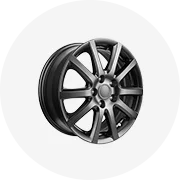
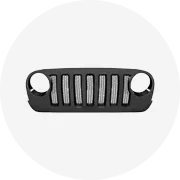
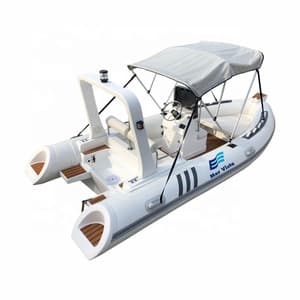
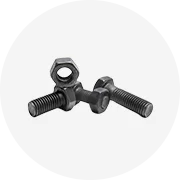
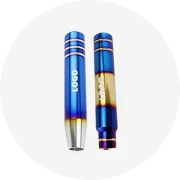
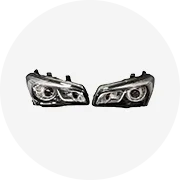
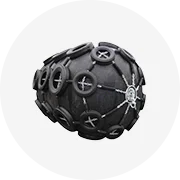
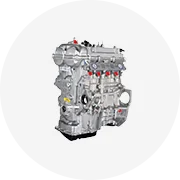
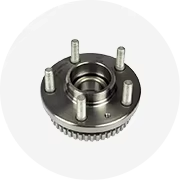
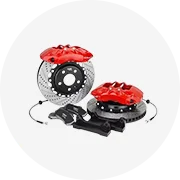
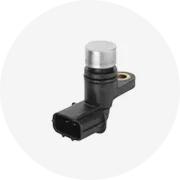
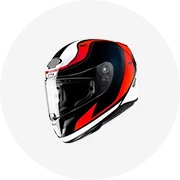
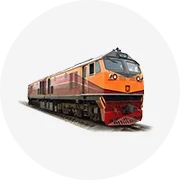
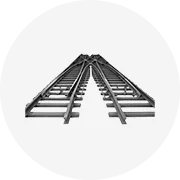
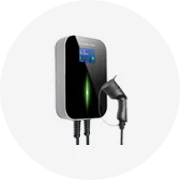
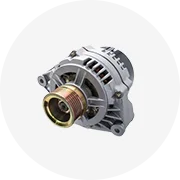






 浙公网安备 33010002000092号
浙公网安备 33010002000092号 浙B2-20120091-4
浙B2-20120091-4